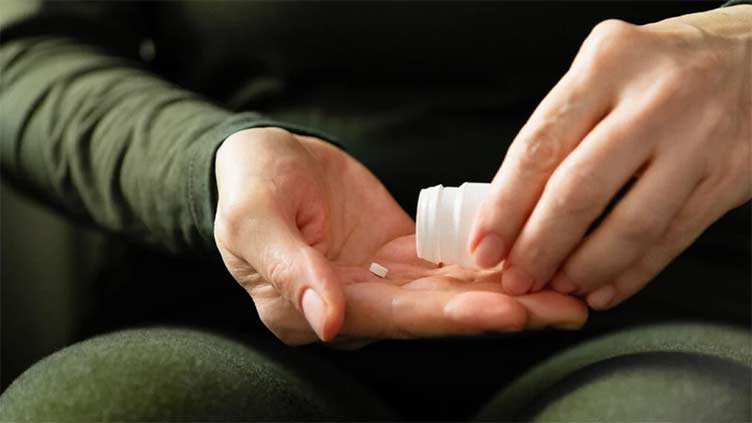Bacterial infections: Why antibiotics don't always work against C. diff

Antibiotics are also the primary treatment for C. diff
ISLAMABAD, (Online) - Antibiotics used to treat it have been traditionally evaluated in a monoculture – not considering interactions with other bacteria.
A new study published today in the journal PLOS Biology assessed two antibiotics in a diverse human gut community to better understand the interactions and how antibiotics affect C. diff growth.
Previous testing on the effectiveness of antibiotics in treating C. diff has used monocultures – cultures containing one bacterium.
For this research, the authors built a model that contained diverse human bacteria to see how two antibiotics, vancomycin and metronidazole, worked while interacting with the varied gut microbiome.
They said they discovered that there were two leading reasons why antibiotics sometimes did not effectively treat C. diff:
• Antibiotics reduce the number of “good” bacteria in our gut. This allows C. diff to grow without competition from other bacteria.
• The effects of other bacteria lead to the sequestration of metals in our intestines, which allows the C. diff to become more tolerant of the antibiotics.
Ophelia Venturelli, an assistant professor in the Biochemistry College of Agricultural and Life Sciences at the University of Wisconsin-Madison who worked on the study, said their findings can help scientists to develop antibiotics more targeted to fighting C. diff infections.
C. diff can be difficult to treat
Antibiotics clearing out bacteria in the large intestine and leaving it vulnerable to infection is the leading cause of C. diff.
Antibiotics are also the primary treatment for C. diff.
According to the American College of Gastroenterology, most people receive an antibiotic – either vancomycin or fidaxomicin – for 10 days to treat the infection.
However, about 10%-20% C. diff cases recur after the end of treatment. It is thought that the normal gut microbiome has not had a chance to replenish.
A longer-term antibiotic course of 10 weeks is usually suggested, tapering the medication to allow it to fight the infection and give the colon time to regrow necessary bacteria.
“New information shows that certain interactions with a patient’s normal biome can make C. diff more or less likely to respond to antibiotics.
But, everyone reacts differently,” said Dr. Tracey Childs, a general and colorectal surgeon and vice chair of surgery at Providence Saint John’s Health Center in California.
“If this happens, we can try using a narrower spectrum antibiotic,” she told Medical News Today.
What you need to know about C. diff
Most of the time, C. diff occurs after someone takes antibiotics, according to the Centers for Disease Control and Prevention.
Other causes include:
• A recent stay at a hospital or nursing home.
• Being over 65.
• Having a weakened immune system.
• A previous infection of C. diff.
Symptoms of C. diff can start when you are still taking antibiotics or shortly after.
The symptoms can include:
• Diarrhea
• Fever
• Stomach tenderness or pain
• Loss of appetite
• Nausea
It is contagious, so people who have it should:
• Make sure to wash their hands with soap and water every time they use the bathroom and before they eat.
• If possible, use a separate bathroom.
• Take showers daily and wash with soap.
What to eat when you have C. diff
Anne Danahy, MS, RDN, a registered dietician and nutritionist specializing in healthy aging, menopause, and chronic disease prevention and management, provides information and tips on what to eat when you have C. diff.
“You may not have an appetite but eating and drinking the right foods can help prevent dehydration and it might help lessen diarrhea,” she told Medical News Today. “There isn’t a one-size-fits-all diet, so it’s important to listen to your body. If something doesn’t digest easily or causes more intestinal pain, wait a few days, and try it again.”
“Fluids that contain salt, sugar, and electrolytes can prevent dehydration and replace lost potassium and electrolytes,” Danahy added. “These are vital if you can’t eat solid foods.”
She suggests trying to consume:
• Pedialyte
• Sports drinks
• Bone broth (this provides some protein) or other clear broth
• Diluted fruit juice
• Non-dairy smoothies made with almond or other plant milk, banana (for potassium), and plain Greek yogurt (for protein and probiotics). The lactose in dairy milk may be hard to digest, so stick to non-dairy until your infection has cleared.
Traditional advice included avoiding fiber when you have diarrhea, but Danahy says you should include soluble fiber.
“It might sound counterintuitive to eat fiber, but soluble fiber can help absorb water, slow your intestines, and add bulk to the stool,” she said.
“The other benefit of soluble fiber foods (or any fiber foods, really) is that the fiber has prebioticsTrusted Source that feeds your friendly gut bacteria. That can help get your gut microbiome back on track. Go slow when adding fiber and see how you feel.”
Good sources of soluble fiber include:
• Oatmeal
• Barley
• Apples/apple sauce
• Citrus fruits (oranges, grapefruit)
• Pears
• Blueberries
• Kiwi
• Beans
• Avocados
• Sweet potatoes


